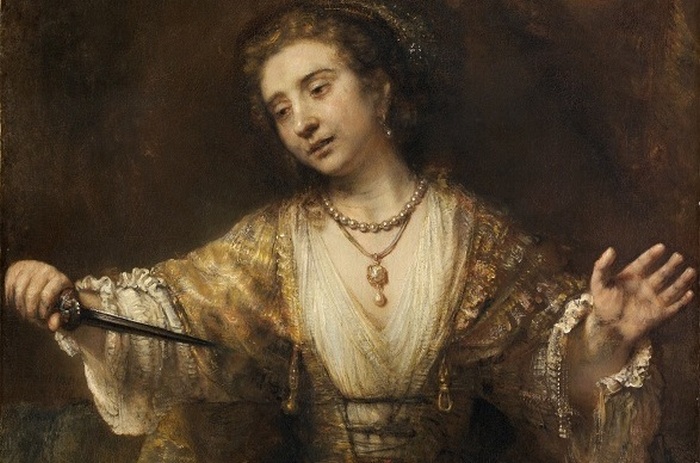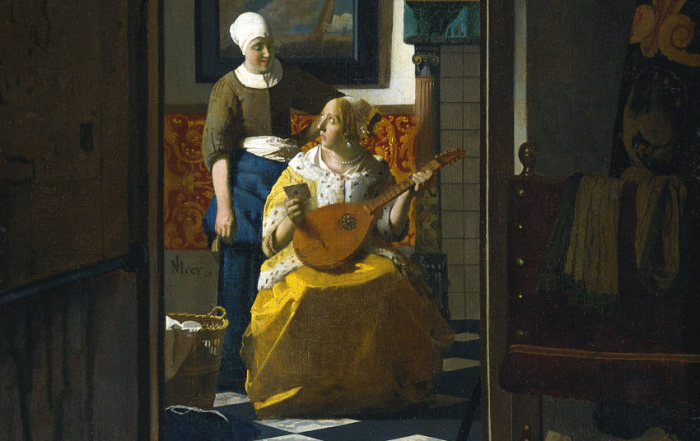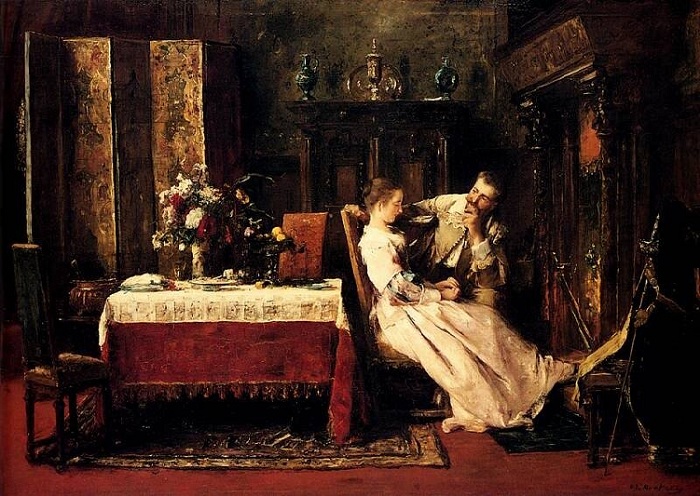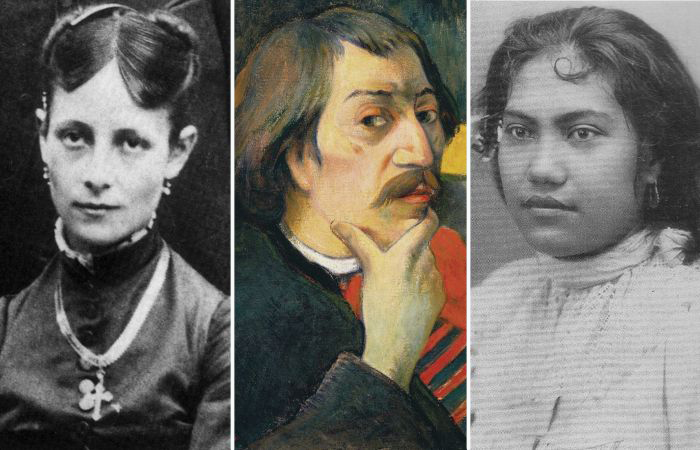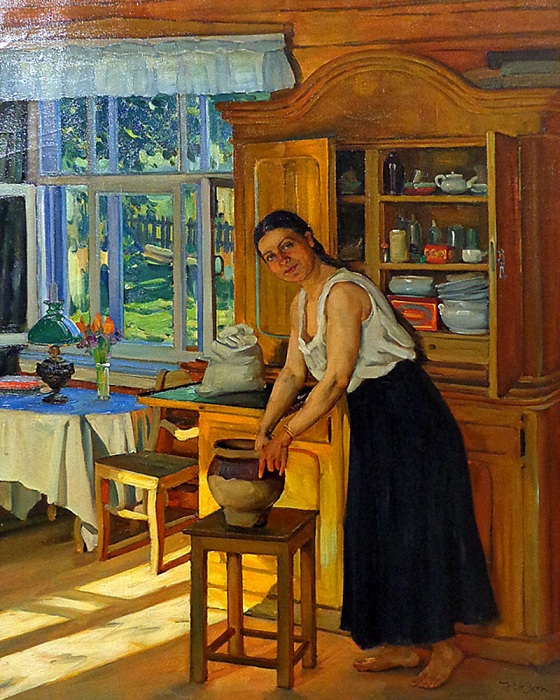Two brides for one groom: The riddle of a picturesque plot about the mystical betrothal of St. Catherine
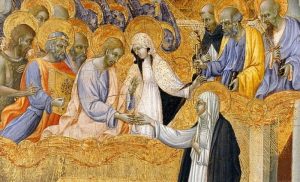 Among the works of Renaissance masters and later periods in the history of painting, there are often those that depict “the mystical betrothal of St. Catherine.” At the same time, the essence of what is happening may seem vague – after all, betrothal in the usual sense of modern man does not occur on canvas. It turns out that two different women could be brides in such paintings, but the groom is always alone.
Among the works of Renaissance masters and later periods in the history of painting, there are often those that depict “the mystical betrothal of St. Catherine.” At the same time, the essence of what is happening may seem vague – after all, betrothal in the usual sense of modern man does not occur on canvas. It turns out that two different women could be brides in such paintings, but the groom is always alone.
First bride – St. Catherine of Alexandria
St. Catherine of Alexandria lived in Egypt in the 3rd century AD. Before the adoption of Christianity, she bore the name of Dorothea and was the daughter of the ruler of Alexandria. The girl was famous for her extraordinary beauty, wisdom, spiritual qualities, and was, of course, an enviable bride, but in grooms she wanted only the most worthy – the one who will surpass her in everything. Then Catherine’s mother took her to the old hermit, who was praying in a cave near the city. He told the girl that he knew the one who is better in everything. Continue reading
Two seasons of love by Paul Gauguin: Virtuous Danish and passionate Tahitian
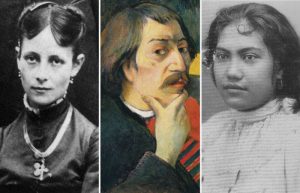 Paul Gauguin was passionate and enthusiastic, he could instantly be inflamed with passion, but his feelings passed as quickly as they appeared. Only two women left a deep mark on the soul and work of the artist. Matte and Tekha’mana were complete opposites: a white-skinned practical Danish and a dark-skinned obedient Tahitian. With one, he lived 12 years and became the father of five children, the other gave him one child, but only for a short time lit up his life.
Paul Gauguin was passionate and enthusiastic, he could instantly be inflamed with passion, but his feelings passed as quickly as they appeared. Only two women left a deep mark on the soul and work of the artist. Matte and Tekha’mana were complete opposites: a white-skinned practical Danish and a dark-skinned obedient Tahitian. With one, he lived 12 years and became the father of five children, the other gave him one child, but only for a short time lit up his life.
Family joys
Paul Gauguin met Matte-Sophie Gad in 1872. The young Danish was a member of the family of Gustave Arosa, who was a friend of the late mother of the artist. It was with his help that Paul Gauguin was able at one time to get the position of a stock broker and secure a quite decent financial position. Continue reading
Why did the famous socialist realist Heliy Korzhev begin to write mutant-turliks and paintings on biblical motifs
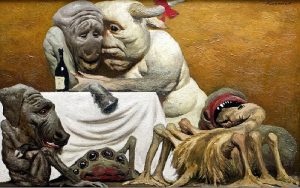 In recent years, in the world of art, interest in the work of Soviet artists has revived. And there was a time when their work was written off to a landfill, and their names were vilified by newfangled critics and art historians of a new formation. From the Soviet period, the legacy of only a few artists remained untouched, among which the name of Helium Korzhev, who had an amazing gift of vision and was able to masterfully convey in one gesture, in the expression on his face, what the whole generation was thinking.
In recent years, in the world of art, interest in the work of Soviet artists has revived. And there was a time when their work was written off to a landfill, and their names were vilified by newfangled critics and art historians of a new formation. From the Soviet period, the legacy of only a few artists remained untouched, among which the name of Helium Korzhev, who had an amazing gift of vision and was able to masterfully convey in one gesture, in the expression on his face, what the whole generation was thinking.
A bit about the artist
Helium – in translation the God of the Sun. His parents wanted to name their son Tractor, but since he was born in a sultry summer, he was named Helios. And if more officially, then Heliy Korzhev is a Soviet painter, teacher, professor, a bright representative of the “severe style”. As well as an academician of the Academy of Arts of the USSR, a national artist, a laureate of several State Prizes. Continue reading
As an apprentice carpenter and an orphan became a world famous salon painter: Mihai Munkachi
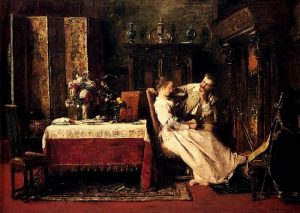 Recently, in the Western world of art, a trend has begun to be traced more clearly, which fundamentally changes the priorities of styles. And no matter how adherents of abstractionism and modernism resisted, finally there was a turn in the direction of figurative painting – meaningful and realistic. The audience was much more impressed by the plot canvases, which can tell a lot for themselves. And today I would like to open to the reader the name of the amazing 19th-century Hungarian painter Mihai Munkachi, whose painting in our time has become in demand like 150 years ago.
Recently, in the Western world of art, a trend has begun to be traced more clearly, which fundamentally changes the priorities of styles. And no matter how adherents of abstractionism and modernism resisted, finally there was a turn in the direction of figurative painting – meaningful and realistic. The audience was much more impressed by the plot canvases, which can tell a lot for themselves. And today I would like to open to the reader the name of the amazing 19th-century Hungarian painter Mihai Munkachi, whose painting in our time has become in demand like 150 years ago.
The life path of each artist is always complicated and ambiguous. So Mihai Munkachi, walking along it, experienced stunning ups and downs. But, as is known from history, only strong-willed masters, clashing with adversity and misfortune, contrary to all laws of logic, temper their art, giving it a true fortress. Continue reading
The bloody drama that broke out centuries ago in Rembrandt’s brilliant painting Lucretius
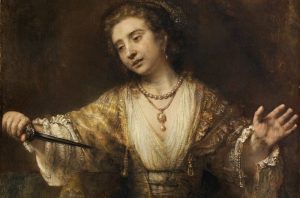 As a rule, artists in all ages, creating their paintings, meticulously approached the choice of subjects that would inspire them to write unique and masterpieces. And since in the old days, plots were taken from legends, myths, biblical stories, the same theme was revealed by painters in different variations and several times. And today I would like to recall one of such legendary stories that laid the foundation for the works of many eminent masters of European painting. This heart-rending plot did not pass by the famous Dutchman Rembrandt Harmenszoon Van Rijn.
As a rule, artists in all ages, creating their paintings, meticulously approached the choice of subjects that would inspire them to write unique and masterpieces. And since in the old days, plots were taken from legends, myths, biblical stories, the same theme was revealed by painters in different variations and several times. And today I would like to recall one of such legendary stories that laid the foundation for the works of many eminent masters of European painting. This heart-rending plot did not pass by the famous Dutchman Rembrandt Harmenszoon Van Rijn.
And the story, which occupied all the thoughts of the artist, was about the pious Roman Lucretia, the beloved heroine of the Renaissance and Baroque artists, who tragically passed away, but tried to save her honor. Continue reading
